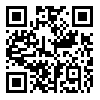Volume 9, Issue 2 (7-2017)
jorar 2017, 9(2): 63-82 |
Back to browse issues page
Download citation:
BibTeX | RIS | EndNote | Medlars | ProCite | Reference Manager | RefWorks
Send citation to:



BibTeX | RIS | EndNote | Medlars | ProCite | Reference Manager | RefWorks
Send citation to:
Ebrahimi A, Nasr Esfehani A, Nilipour Tabataba'i S A. Designing an Organizational Learning Institutionalization Pattern and Its Relationship Analysis with Self-Efficacy of Managers and Experts (Case Study of the Red Crescent Organization of the Whole). jorar 2017; 9 (2) :63-82
URL: http://jorar.ir/article-1-342-en.html
URL: http://jorar.ir/article-1-342-en.html
PhD student in Human Resource Management, Research Institute of Shakhes Pajouh, Isfahan, Iran
Abstract: (3468 Views)
Introduction: This research has been done with the aim of designing an organizational learning institutionalization pattern and its relationship analysis with self-efficacy of managers and experts in Red Crescent Society.
Method: In this exploratory analytical research, 215 ones were determined by using Cochran formula. In order to design an organizational learning institutionalization model, 450 concepts about the institutionalization of culture were extracted from sociological texts and scientific databases in general and using experts’ opinions through Delphi technique. In the following, seventy-three concepts were agreed by experts in the field of institutionalization of the organizational learning culture and finally the questionnaire was prepared. In the first stage, according to the research literature, the exploratory factor analysis, and using SPSS, five main components were identified and named including management, goals, cultural, strategic, and learning. In the second stage, DEMATEL software was used to determine the influence and impact between criteria. In the third stage, the organizational learning institutionalization model was designed by using Lisrel software.
Findings: There is a significance relationship between the components of the institutionalization model organizational learning (cultural factors, management, goals, strategic and learning) with self-efficacy dimensions (successful experiences, verbal or social persuasions, emotional and physiological states). In addition, the relationship between organizational learning components of organizational learning and the dimensions of self-efficacy (successful experiences, verbal or social persuasion, emotional and physiological states) has been significant based on the results of stepwise regression analysis.
Conclusion: According to the results, to provide a model for institutionalizing organizational learning, it is necessary to include the components of organizational learning institutionalization model, namely cultural and managerial factors, goals, strategic and learning with self-efficacy dimensions i.e. successful experiences, verbal or social motivations, emotional and physiologic states must be close relationship so that better self-efficacy can better realize the institutionalization of the knowledge capital of the Red Crescent Society.
Method: In this exploratory analytical research, 215 ones were determined by using Cochran formula. In order to design an organizational learning institutionalization model, 450 concepts about the institutionalization of culture were extracted from sociological texts and scientific databases in general and using experts’ opinions through Delphi technique. In the following, seventy-three concepts were agreed by experts in the field of institutionalization of the organizational learning culture and finally the questionnaire was prepared. In the first stage, according to the research literature, the exploratory factor analysis, and using SPSS, five main components were identified and named including management, goals, cultural, strategic, and learning. In the second stage, DEMATEL software was used to determine the influence and impact between criteria. In the third stage, the organizational learning institutionalization model was designed by using Lisrel software.
Findings: There is a significance relationship between the components of the institutionalization model organizational learning (cultural factors, management, goals, strategic and learning) with self-efficacy dimensions (successful experiences, verbal or social persuasions, emotional and physiological states). In addition, the relationship between organizational learning components of organizational learning and the dimensions of self-efficacy (successful experiences, verbal or social persuasion, emotional and physiological states) has been significant based on the results of stepwise regression analysis.
Conclusion: According to the results, to provide a model for institutionalizing organizational learning, it is necessary to include the components of organizational learning institutionalization model, namely cultural and managerial factors, goals, strategic and learning with self-efficacy dimensions i.e. successful experiences, verbal or social motivations, emotional and physiologic states must be close relationship so that better self-efficacy can better realize the institutionalization of the knowledge capital of the Red Crescent Society.
Keywords: Self-efficacy, Organizational Learning, Organizational Learning Institutionalization, Successful Experiences, Verbal Investigations
Article Type: Research article |
Subject:
Psychological support in disasters
| Rights and permissions | |
 |
This work is licensed under a Creative Commons Attribution-NonCommercial 4.0 International License. |






